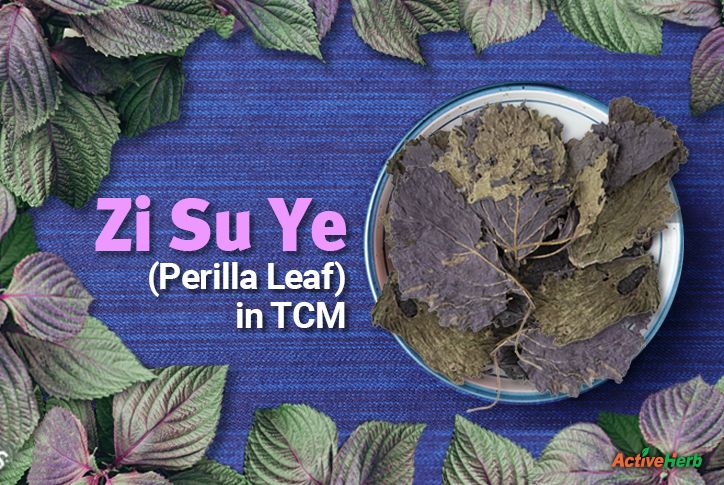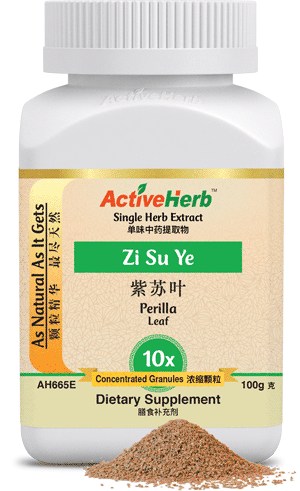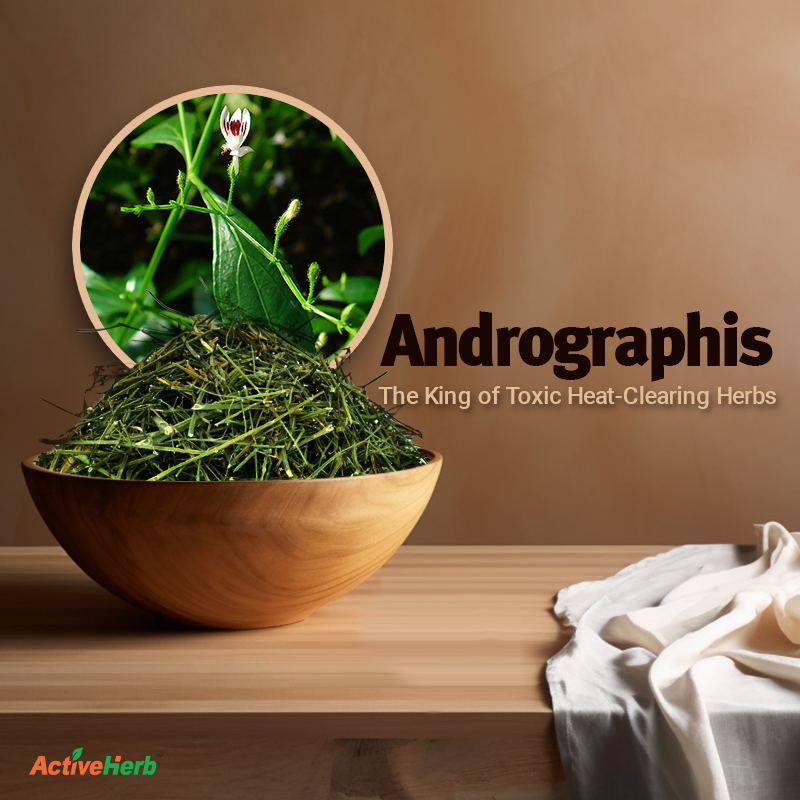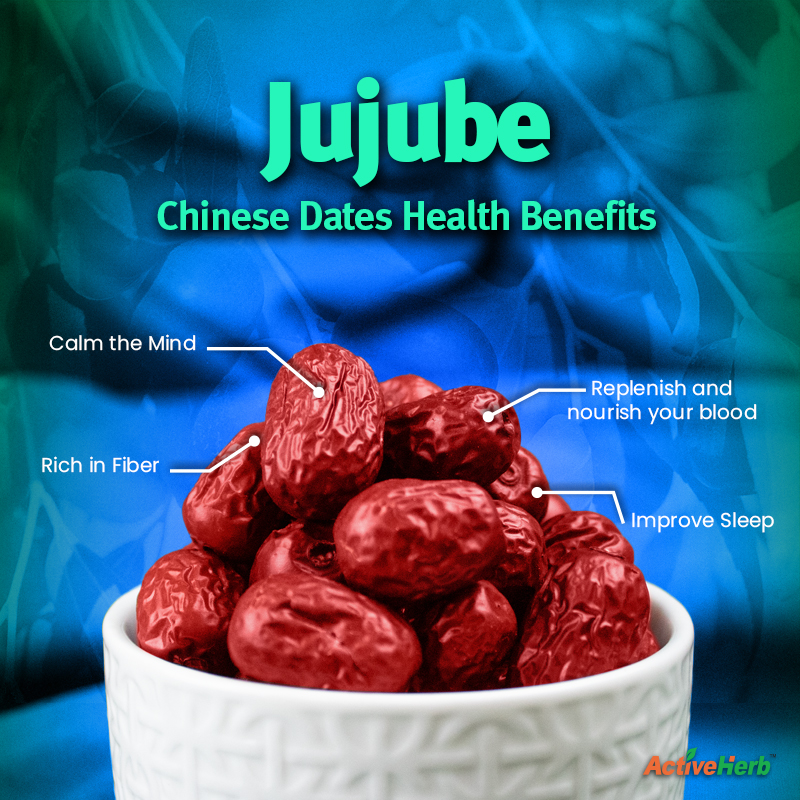Zi Su Ye (Perilla Leaf) in TCM: Don’t Leave Home Without This “Traveler’s Remedy”

What if you had to choose only 1 TCM herb to take with you on a trip? Which one would it be? Take your time selecting. After all, there’s a few hundred commonly-used TCM herbs to choose from.
But we’ll give you a hint. What if you could combine digestive system support formulas like Huo Xiang Zheng Qi Pian (Stomacare™) with the Cold-Wind dispersing power of a formula such as Ge Gen Tang Pian (Kudzu Relaxe™)?
There’s a good reason why this unique herb is a “traveler’s remedy” in the Orient.
The herb that can harmonize your belly and kick Wind-Cold to the curb is…
Zi Su Ye (Perilla Leaf)
If you’re traveling, especially to a foreign country, the last thing you want to do is spend most of your vacation glued to the loo or suffering in your hotel room with a nasty cough. Thankfully, traditional Chinese medicine formulas have a long track record of successfully supporting the digestive and respiratory systems when they need some TLC on vacation.
Zi Su Ye, aka Perilla Leaf, is one of the rare single Chinese herbs that may help on both accounts. It’s for this reason that this TCM herb, which has been cultivated in China for over two millennia, was one of the first medicinal and edible plants published by the Chinese Ministry of Health, according to a 2023 research article published in Chinese Herbal Medicines.
Yes, not only should you take Perilla Leaf extract with you abroad, you should also use dried Perilla leaf in your kitchen. (Keep reading for ideas on which dishes Perilla Leaf goes best with.)
Before we get creative with Perilla leaf recipes, however, let’s get to know some basic facts about Zi Su Ye.
Zi Su Ye (Perilla Leaf) in TCM Theory
Perilla Leaf influences the Lung and Spleen meridians. Its actions are releasing the exterior and dispersing cold, promoting Qi movement, and harmonizing the Stomach. Used for Wind-Cold patterns, Zi Su Ye is the herb you want to have on hand when your tummy feels funny after you eat, or at the outset of when your head starts feeling achy, your nose is stuffy or you have an occasional cough. In other words, Zi Su Ye is for ye when you start feeling under the weather.
According to Dr. Subhuti Dharmananda, who directs the Institute for Traditional Medicine, in the modern Chinese Materia Medica, Perilla Zi Su Ye, a warm herb, is also valuable for dispersing stagnant qi and calming the mind. This makes Perilla Leaf similar to the Chinese herb, Chai Hu (bupleurum root) in this dual Qi-regulating and mind-calming capacity.
In addition to harmonizing the stomach, regulating Qi (which normalizes feelings in the chest cavity, abdominal cavity and the mind), Zi Su Ye resolves Dampness and may also help support the body’s Wei Qi for seasonal allergies. Yet more reasons to always have Perilla Leaf extract with you.
What Does Zi Su Ye Mean?
English or Latin botanical names of herbs seldom give clues about the origins of the nomenclature of Chinese herbs. Take bupleurum for instance. Whereas, there’s always a story behind the name of Chinese herbs. For instance, let’s dissect Perilla Leaf’s pinyin name (the English spelling of Chinese words), Zi Su Ye. The “Zi” character refers to the distinctive red-purple color of the stem, while “Su” denotes comfort. And there’s nothing more comforting than a hot instant tea to make you feel better.
The reason why Perilla leaves and stems may appear bright purple and reddish is because of phytonutrient antioxidant compounds such as anthocyanins and flavones. In addition, the leaves contain rosmarinic acid. Just as the name implies, rosemary is also rich in rosmarinic acid, as are many other kitchen spices that may soothe the tummy.
So whether you enjoy the old-school way of making Chinese herbal medicine, with raw dried leaves or you appreciate the modern convenience of concentrated herbal extract granules, you can’t go wrong with the purple-stemmed Perilla, which is indigenous to the Indian subcontinent and Far East nations of China, Japan and Korea.
Has Perilla caught on in the West? Of course, users of traditional Chinese medicine can order it with the click of a mouse. Perilla does in fact grow widespread in the United States, mostly east of the Mississippi. But like Kudzu root (the namesake herb in Kudzu Relaxe), in the West, Perilla’s therapeutic potential is mostly an underdog because of its reputation as an invasive weed.
Zi Su Ye in TCM Through The Ages
The first written mention of Perilla Leaf appears in “The Miscellaneous Records of Famous Physicians” or ‘Mingyi Bielu’ (4th – 5th centuries, C.E.), a collection of successive generations of materia medica. Perilla leaf is also in the most complete and extensive medical book in the history of Chinese medicine, the Compendium of Materia Medica (Ben Cao Gang Mu) which lists TCM herbs used before the 16th century. In these ancient classic texts and others, there are some very interesting uses of Perilla leaf.
For starters, make no mistake about it: if you get bit by a rattlesnake, get to the hospital as quickly as you can for an infusion of anti-venom. But an ancient shout-out in “Qian Jin Fang” (translation: ‘Golden Prescriptions for Emergency,’ written circa 650 C.E.), recommends a juice made out of Perilla leaves for poisonous snake bites, says ITM’s Dr. Dharmananda, who references information provided by the walking TCM encyclopedia, Jiao Shu-De.
The next time you overindulge in fish and crabs while on vacation on the East Coast’s Delmarva peninsula, perhaps Perilla can possibly help. As mentioned above, it is used in TCM to harmonize the Stomach. But in the ancient Orient, Perilla leaves for the overconsumption of seafood, especially fish and crabs, is recommended in the Synopsis of Prescriptions of the Golden Chamber (“Jin Gui Yao Lue”), which is believed to be written nearly 2,000 years ago.
In ancient times, Perilla leaves were combined with mulberry leaves to help stop bleeding caused by wounds inflicted by swords and other metallic weapons. (Quick disclaimer: don’t try treating snake bites or wounds with Perilla leaf; get to a hospital, stat!).
Cough One Up To Perilla Leaf Formulas
Perilla is in several TCM formulas to treat occasional coughs, including these 3 that the aforementioned 2023 study in Chinese Herbal Medicines lists:
- Perilla Fruit Powder (Su Zi San); listed in the Materia Medica of Southern Yunnan (Dian Nan Ben Cao)
- Perilla Decoction (Zi Su Yin); listed in Bo Ji Fang
- Perilla Powder (Zi Su San); listed in Experiential Prescriptions for Universal Relief (Pu Ji Ben Shi Fang)
In addition, these Perilla-based formulas are in the early 12th-century C.E. medical text, Taiping Huimin Hejiju Fang, aka “The Prescriptions of the Bureau of the Management and Administration of Pharmacy,” which according to the Library of Congress is the earliest book of patent medicine in the world and dates from the Northern Song dynasty (960-1127).
- Cyperus and Perilla Formula (Xiang Su Tang): For Cold-Wind with digestive difficulties
- Ginseng and Perilla Combination (Shen Su Yin): For Cold-Wind with lung complications
- Aquilaria and Perilla Formula (San He San): For stagnation of Qi, with abdominal fullness
- Citrus and Perilla Combination (Fen Xinqi Yin): stagnation of Qi, with stomach deficiency
Zi Su Ye (Perilla Leaf) As a Culinary Herb
Throughout Southeast Asia, Perilla leaves are prized not only in traditional medicine but also in kitchens. In Japan, the name for Zi Su sounds very similar to its Chinese namesake, Shiso, which is used to wrap sushi and sashimi rolls and in tempura dishes. Tempura might not be what your cardiologist ordered, but the deep-fried batter with Perilla leaf is a delicious treat.
A short hop across the Sea of Japan, the Korean peninsula uses Perilla to make a specific type of pickles or kimchi (fermented spicy cabbage) with garlic, chili and other spices.
Perilla leaf’s minty, earthy and slightly sweet flavor is also ideal in salads, wraps, stir-fries, noodle soups, sauces, and of course, herbal tea.
Interested in using Perilla leaves in your dishes? Order bulk Zi Su Ye here.







